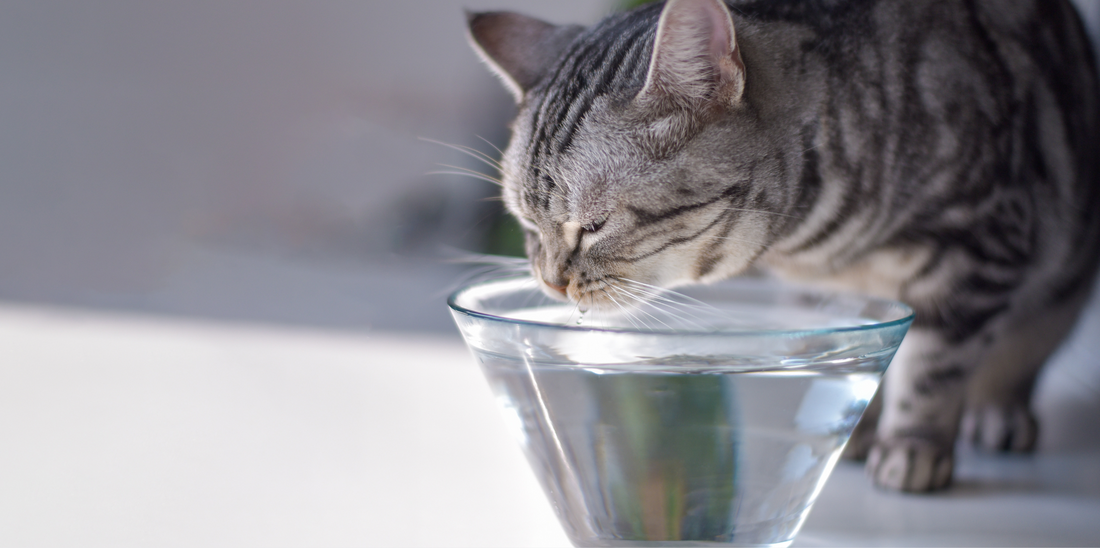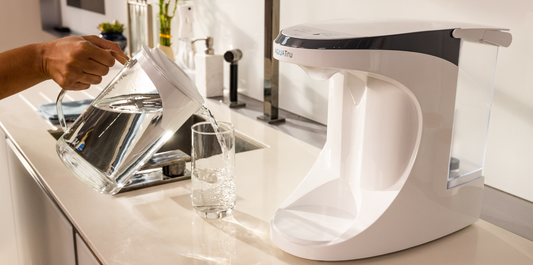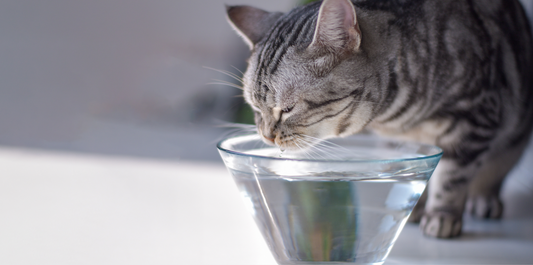Why pets seem tough but aren’t invincible
- Higher dose per kilo – a 5 kg cat typically needs about 50–60 ml of water per kilogram each day (250–300 ml total), whereas the NHS advises most adults to drink around 1.5–2 litres daily. For a 70 kg person that’s only 21–29 ml per kilogram—roughly half the feline dose.
- Silent organ stress – early kidney or liver damage shows little outwardly. By the time you notice weight loss or a dull coat the problem (and the bill) can be steep.
- Shorter lifespans, faster accumulation – dogs and cats live far fewer years, so a “lifetime” dose of contaminants builds up much sooner. Companion-animal studies now treat pets as sentinels that flag environmental toxins long before they harm people.
Surviving tap water doesn’t prove it’s optimal—just as humans can survive on takeaway chips yet thrive on balanced meals.

Five tap-water contaminants that quietly hit pets
|
Contaminant/s |
Typical sources |
Effects |
Evidence |
|
Lead & other heavy metals
|
Ageing pipes, brass fittings
|
Neurological signs, anaemia, kidney injury
|
|
|
PFAS (“forever chemicals”)
|
Non-stick pans, firefighting foams, industrial run-off
|
Enlarged liver, altered cholesterol, possible thyroid disruption
|
|
|
Excess fluoride
|
Water fluoridation, fertiliser run-off
|
Dental fluorosis, skeletal changes
|
Merck Vet Manual documents malnutrition and skeletal and dental abnormalities from high-fluoride water in companion animals.
|
|
Chlorine & chloramine
|
Mandatory disinfection
|
Gastric irritation, vomiting, itchy skin in sensitive pets
|
|
|
Microplastics
|
Pipe scale, bottled water, household dust
|
Emerging links to reduced fertility and endocrine stress
|
Studies have detected microplastics lodged in the kidneys and livers of household cats and dogs, provoking inflammation and oxidative stress. They can also cause low sperm counts.
|
Subtle signs you might miss
- Recurring mild vomiting or loose stools
- Thinning coat or dry, flaky skin
- Early dental wear or mottled teeth
- Increased thirst or dilute urine (early kidney strain)
If diet and parasites are ruled out, water quality is the easiest variable to upgrade.
Why bottled water or jug filters don’t do the job
Standard carbon jug – improves taste and removes some chlorine, yet leaves most heavy metals, PFAS, fluoride and microplastics behind.
How AquaTru puts safety on autopilot

- Four-stage reverse osmosis removes up to 99% of all harmful substances in your water—exact figures were certified by IAPMO based on the NSF/ANSI standards 42,53,58 and 401.
- Countertop models do not require plumbing—fill the tap-water tank, press Start and pour purified water into a stainless or ceramic bowl within minutes.
-
Glass or BPA and BPS free Tritan™ tanks rule out plastic leaching.
- Low running cost— each filter sets lasts for months with normal use and proper maintenance, and the unit sips only a few pence of electricity— far less than long-tern kidney or liver treatment would cost.
Removing water contaminants is one of the most economical ways to safeguard your pet's health, often preventing lengthy (and costly) treatments for just a few pence of filter cost per day.
Everyday hydration tips
- Serve AquaTru water in stainless-steel or ceramic bowls—plastic scratches harbour bacteria.
- Refresh bowls every 12 hours to prevent biofilm build-up.
- Wash bowls daily with unscented washing-up liquid; fragrances can put cats off.
Play it safe—don’t risk hefty vet fees later
Your pet’s bowl matters as much as their food. For a fraction of the cost of treating long-term organ problems, AquaTru gives them (and you) clean, great-tasting water every day.





